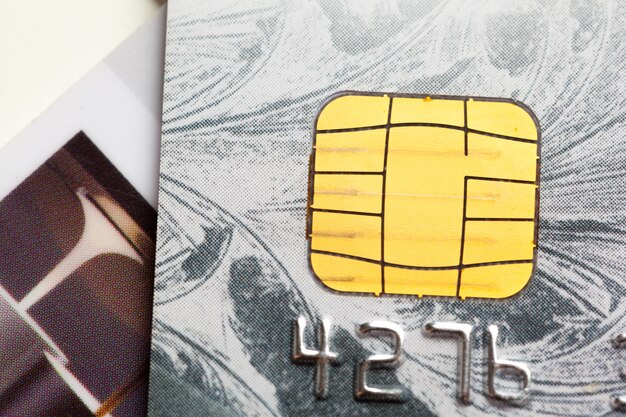What Makes an Amex Card Unique: Understanding the Numbers on Your Card
American Express, often referred to as Amex, is a well-known and respected name in the world of credit cards. If you've ever held an Amex card, you might have noticed some features that set it apart from other credit cards. Among these unique characteristics is the number of digits in the card number. This detail is not only significant for security purposes but also for what it conveys about the card type and functionality. Let's delve into the specifics of how many numbers an Amex card has, and explore some related insights about American Express cards that cardholders and potential customers might find intriguing.
🤔 How Many Digits Do You Find on an Amex Card?
Unlike most other credit cards that have a 16-digit card number, American Express cards typically have 15 digits. This distinction is a hallmark of Amex cards and plays a crucial role in their identification and processing.
📌 Structure of an Amex Card Number
The structure of an Amex card number is thoughtfully designed:
- First digit (3): Indicates the card is issued by American Express. Amex uses numbers beginning with '34' or '37'.
- Next five digits: These are part of the account identifier, commonly used for routing purposes.
- The remaining digits: They consist of the cardholder's individual account number and end with a check digit, a crucial number calculated using the Luhn algorithm to prevent mistyped entries.
🎯 Why Does an Amex Card Have 15 Digits?
The reason behind the 15-digit format is rooted in the history and proprietary nature of American Express's operations. Historically, Amex aimed to create a card system that not only assured security but also set its products apart in the marketplace. The 15-digit number contributes to enhanced security because it entails a different setup algorithm than the standard 16-digit card, making fraudulent activities harder to conduct.
🛡️ Security Features of Amex Numbers
American Express places a high premium on card security, and the structure of the card number is integral to this effort. The use of a unique identifier sequence aids in:
- Reducing fraud risks: The proprietary numbering reduces the chances of successful counterfeit attempts.
- Tracking transactions: More precise identification aids in efficiently tracking and managing cardholder transactions.
🧩 Related Aspects of Amex Cards
📚 Embossing and CVV Details
Apart from the number, other elements include the card's embossing and the Card Verification Value (CVV).
- Embossing: While most Amex cards have embossed numbers, some newer models are opting for a sleeker design without raised numbers for modern aesthetics.
- CVV Placement: Differently positioned compared to other cards, Amex cards feature a four-digit CVV on the front of the card, rather than a three-digit code found on the back of most other cards.
💳 Types of American Express Cards
Amex offers a diverse range of cards, each with its own set of benefits tailored to different consumer segments. Notable types include:
- Charge Cards: Different from credit cards as they require you to pay off the balance in full each month.
- Credit Cards: These offer greater flexibility with revolving credit.
- Co-branded and Partnership Cards: Include partnerships with airlines, hotels, and other retailers, providing specific benefits associated with those brands.
🔍 Understanding Amex's Unique Card Issuing Approach
American Express is both a card issuer and a network provider, which gives it a significant edge:
- Issuing and Network Handling: Amex functions as the bank, issuing cards directly to consumers without needing third-party banks to underwrite credit risks.
- Closed-loop System: This system allows better oversight and typically results in more extensive rewards or cardmember services.
🌍 Global Acceptance Evolution
For many years, a smaller merchant network accepted Amex due to higher transaction fees compared to other networks. In recent years, Amex has invested heavily to expand its global acceptance, making strides in increasing merchant partnerships.
📊 Key Takeaways and Practical Tips
Here are some essential highlights for both current and future Amex cardholders:
- Check Your Card Details: Always verify the 15 digits and the four-digit CVV for accuracy.
- Take Advantage of Benefits: Explore the comprehensive perks of your specific Amex card, such as travel insurance, cash back, or rewards points.
- Stay Informed About Terms: Regularly check for updates in terms and services to maximize card benefits and manage finances effectively.
🌟 Visual Summary: Amex Card Essentials
| Feature | Details |
|---|---|
| Card Number | 15-digit carefully structured sequence |
| Issuer Identifier | '34' or '37' to specify it's an Amex |
| CVV Location | 4-digit on the front |
| Card Types | Charge Cards, Credit Cards, Co-branded |
| Security & Resilience | Enhanced security with unique identifier |
🏷️ Final Thoughts: What Makes Amex Stand Out?
In the vast ocean of credit-card options, American Express cards stand out due to their unique 15-digit number, which is both a symbol of the company's storied heritage and a functional element of its secure payment processing design. Whether you're an existing cardholder curious about these details or a potential customer weighing your options, understanding the structure and benefits of Amex cards can significantly enhance your financial decisions. Always consider all card features thoroughly and choose an option that aligns closely with your financial habits and lifestyle needs.

Related Topics
- Can a Non Frequent Traveler Benefit From Amex Platinum
- Can Amex Points Be Transferred To United
- Can I Access Delta Sky Club With Amex Delta Card
- Can I Cancel Amex Card Online
- Can I Do Wire Transfer With Amex Saving
- Can I Earn Points On My Corporate Amex
- Can I Pair Up Amex Platinum And Delta Skymiles Together
- Can I Pay Rent With Amex Gold Card
- Can I Put My Amex Platinum On Hold
- Can I Transfer Amex Points To American Airlines